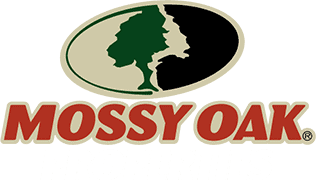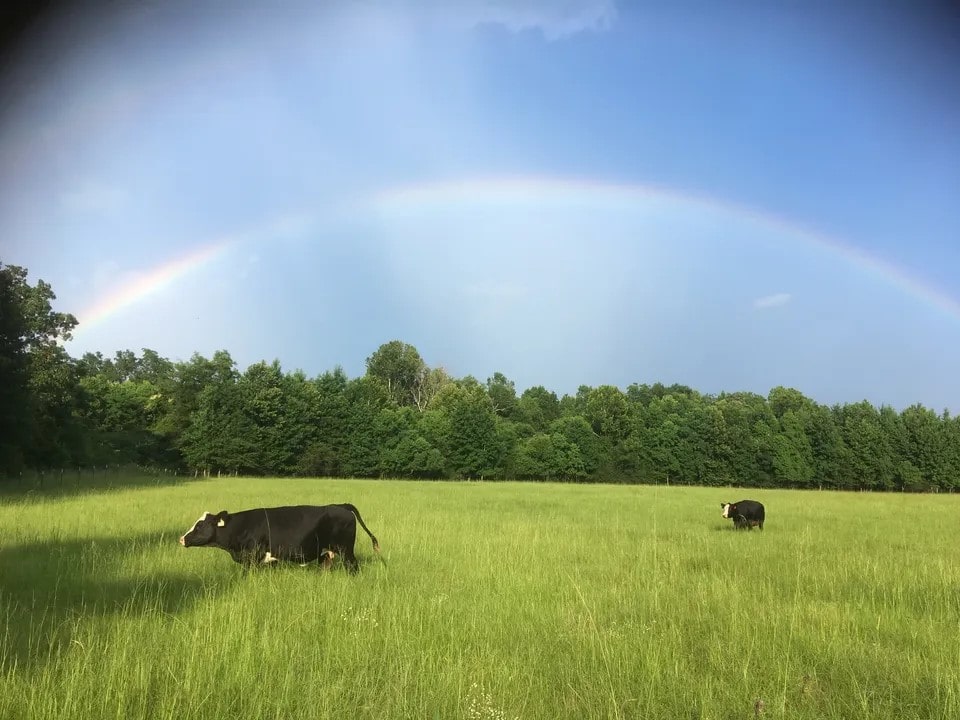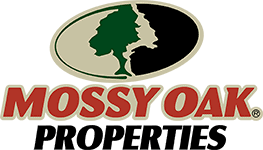Alabama, known as the “Heart of Dixie,” offers a rich tapestry of fertile lands and historic beauty. Its landscape ranges from the Appalachian foothills to the Gulf Coast’s sandy shores, presenting varied opportunities for investment and adventure. Understanding the distinct offerings of each part of Alabama is essential for anyone interested in land investment in this southern state. Let’s explore the diverse land types found across Alabama’s key regions.
Northwest Alabama
Northwest Alabama Land at a Glance
|
Types of Land for Sale in Northwest Alabama:
Waterfront Property:
The Tennessee River flows through this region, offering towns like Florence and Decatur waterfront property opportunities. Real estate along the river is ideal for residential subdivisions, marinas, or leisure and tourism businesses that take advantage of water access. Properties near Muscle Shoals Lake offer stunning waterfront views and access to boating, fishing, and other water-based activities. This area appeals to those seeking a tranquil lifestyle close to nature.
Woodland Property:
Land near Natural Bridge and Double Springs is known for its diverse ecosystems, including hardwood forests, pine plantations, and scenic rivers. It offers numerous outdoor recreational activities such as hiking, camping, fishing, and wildlife viewing.
Residential Land:
Towns like Florence, Muscle Shoals, Sheffield, and Tuscumbia are known for picturesque landscapes, including the Tennessee River, rolling hills, and lush forests. This area offers a mix of urban conveniences and rural charm, with amenities such as cultural attractions, parks, and outdoor recreational opportunities.
Commercial Land:
With a growing population comes the need for more retail spaces, restaurants, and entertainment venues. Towns like Madison and Florence are ideal for new businesses aiming to serve both residents and the increasing number of visitors.
Agricultural Land:
The region around the Tennessee Valley, including places like Decatur and Athens, is known for its fertile soil. It’s perfect for growing a wide range of crops, from cotton to corn, and even for starting orchards or vineyards. Those interested in farming will find these lands to be among the best.
Recreational Land:
Northwest Alabama boasts stunning natural beauty like the Bankhead National Forest near Moulton. These areas are ripe for eco-tourism businesses, outdoor adventure companies, and hospitality services that cater to tourists and outdoor enthusiasts.
Northwest Alabama is particularly popular for its scenic beauty, amenities, and community offerings. Investors should consider factors such as zoning regulations, proximity to essential services, and future development plans. It’s also advisable to work with a local real estate agent who can provide valuable insights and assistance throughout the purchasing process.
Northeast Alabama
Northeast Alabama Land at a Glance
|
Types of Land for Sale in Northeast Alabama
Woodland Property:
The foothills of the Appalachian Mountains, including areas around Fort Payne and Scottsboro, provide beautiful settings. This land is excellent for those looking to build homes with stunning views or for developers interested in creating rustic cabin retreats for tourists. Lands near Little River Canyon National Preserve feature dense forests along the canyon rim and within the surrounding area, offering hiking trails, scenic overlooks, and wildlife.
Residential Land:
Huntsville and its surrounding areas offer attractive residential options with a booming economy driven by aerospace, defense, and technology industries. The city boasts a high quality of life, excellent schools, and a range of recreational activities. This economic growth is driving a need for new residential areas like subdivisions and apartment complexes.
Commercial Land:
Towns such as Gadsden and Anniston are growing as more people move away from big cities, creating demand for commercial spaces. Entrepreneurs can find success in establishing new restaurants, retail stores, and entertainment options to serve both locals and visitors.
Historic Land:
Northeast Alabama is rich in cultural heritage, presenting opportunities for businesses focused on history and the arts. This includes museums, cultural festivals, and historical site tours, especially in areas with Native American and Civil War significance.
Agricultural Land:
Valleys like those near Sand Mountain are known for their fertile soil. Here, you can grow a variety of crops or even establish specialty farms like orchards or vineyards. The land is also suitable for raising livestock, offering a solid foundation for those interested in starting a farm or expanding an agricultural business.
Industrial Land:
Huntsville is a heavily industrial region with a large number of high-tech companies, making the area highly receptive to new opportunities.
Recreational Land:
With natural attractions like Little River Canyon and Noccalula Falls, there’s plenty of room for outdoor recreation ventures. Businesses can offer camping, hiking, rock climbing, and even guided tours to explore the natural beauty of the area.
Conservation Land:
Areas near the Appalachian foothills offer rich natural resources. This land can be utilized for sustainable logging, mining, and renewable energy projects like wind farms, capitalizing on the area’s natural assets.
In Northeast Alabama, there’s a variety of land that offers something for everyone. From farming and residential projects to tapping into the tourist market, this region is full of potential. When planning to invest or develop in this area, it’s important to consider the local community’s character and needs, as well as the long-term sustainability of your venture.
West Alabama
West Alabama Land at a Glance
|
Types of Land for Sale in West Alabama:
Woodland Property:
Much of West Alabama is covered by pine and hardwood forests. Oakmulgee Wildlife Management Area offers opportunities for hunting, wildlife viewing, and hiking. Landowners can engage in sustainable forestry practices or create recreational escapes.
Residential Land:
Tuscaloosa, the largest city in West Alabama and home to the University of Alabama, has a need for housing that caters to the diverse lifestyles of professionals and students. Quieter suburban areas like Northpoint and Homewood desire housing close to amenities such as parks, restaurants, and shopping districts.
Commercial Land:
Population centers and tourist destinations, like Tuscaloosa and Burminham, offer opportunities for retail businesses, restaurants, hotels, and entertainment venues. The presence of major universities, sports events, and cultural attractions contributes to the demand for retail and hospitality services.
Wetlands:
West Alabama is home to several major rivers, including the Tombigbee, Black Warrior, and Cahaba rivers. Swamps, marshes, and bottomland hardwood forests provide important habitat for wildlife. These spaces can be utilized for access to fishing and water-based activities.
Agricultural Land:
Lands near Demopolis, Selma, Livingston, and Eutaw are favorable for growing cotton, peanuts, corn, and soybeans. The region is also well-suited for the livestock industry, particularly cattle and poultry farming.
Industrial Land:
West Alabama is increasingly becoming a hub for technology and innovation, with startups, tech companies, and research institutions driving growth in areas like Tuscaloosa, Bessemer, Selma, and Marion. Strategic locations near major transportation routes are attractive for logistics and distribution operations.
Investing in land in West Alabama can be a promising venture, depending on various factors such as location, land type, intended use, and market trends. It’s essential to conduct thorough research, assess market conditions, and consult with local experts to guide you in making an informed decision.
East Alabama
East Alabama Land at a Glance
|
Types of Land for Sale in East Alabama:
Woodland Property:
Areas in and around Cheaha State Park are known for their beautiful woodland landscapes and potential for investment or recreational purposes. Near Wedowee and Roanoke, the rolling hills and forests are ideal for hunting retreats, timberland investments, or simply a secluded getaway.
Residential Land:
Auburn, Opelika, and Smiths Station have experienced steady growth, making them attractive locations for residential development. Towns like Phenix City, near Columbus, Georgia, and Park City, near Montgomery, offer opportunities for housing that caters to commuters.
Commercial Land:
Strategically located between Birmingham and Atlanta along the interstate, communities like Anniston and Oxford are favorable spots for businesses looking to serve both local and regional markets. Gadsden, located along the Coosa River, has a diverse economy, including manufacturing, healthcare, and retail, offering opportunities for various commercial ventures.
Agricultural Land:
Along the Chattahoochee River, fertile soils and relatively mild climate are conducive to growing fruits and vegetables. Tallapoosa County has a mix of agricultural land, including rolling hills, river bottoms, and valleys. This area is known for its production of poultry, cattle, hay, corn, and soybeans.
Industrial Land:
Talladega County is strategically located along Interstate 20 and is home to the Talladega Superspeedway. The area has available industrial land and is known for automotive and manufacturing industries. Areas along major highways and rivers are ideal for multiple industries, including transportation, logistics, warehousing, distribution, and supply chain management.
In Eastern Alabama, the variety of landscapes and booming economy provide diverse opportunities for investment and development. Whether it’s leveraging the agricultural potential, participating in the expanding urban landscape, or tapping into the tourism sector, there’s a broad scope for successful ventures. It’s crucial to approach these opportunities with a clear understanding of the local market and a vision for sustainable growth.
Southwest Alabama
Southwest Alabama Land at a Glance
|
Types of Land for Sale in Southwest Alabama:
Waterfront Property:
Communities neighboring the Gulf of Mexico, like Gulf Shores and Orange Beach, are renowned for their beautiful white sand beaches. There are numerous opportunities for beachfront condos, vacation rentals, and waterfront dining establishments. Dauphin Island, located south of Mobile Bay, is a barrier island known for its pristine beaches, fishing spots, and laid-back atmosphere, offering stunning views of the Gulf of Mexico and Mobile Bay.
Woodland Property:
Southwest Alabama is known for its extensive forests, making timberland a significant opportunity. Investors can purchase land for timber production, sustainable forestry practices, or recreational purposes. Known for its beautiful wooded areas and scenic views of the bay, Meaher State Park offers camping, hiking, and picnicking.
Residential Land:
Growing cities like Mobile and towns throughout the region present opportunities for single-family homes and multi-family housing. Located on the eastern shore of Mobile Bay, towns like Fairhope, Daphne, and Spanish Fort are popular among retirees and families seeking peaceful yet vibrant communities with access to outdoor activities.
Commercial Land:
The Baldwin Beach Express Corridor connects Interstate 10 to Gulf Shores and Orange Beach and has seen rapid growth and infrastructure development. It presents opportunities for commercial projects catering to tourists and residents alike, such as retail outlets, restaurants, and entertainment venues. Areas with access to the Gulf of Mexico and rivers, waterfront properties in southwestern Alabama offer unique opportunities for commercial development, including tourism, recreation, and marine-related industries.
Agricultural Land:
The region’s fertile soils and favorable climate support a variety of agricultural activities like crop production, livestock farming, agri-tourism, food processing, and distribution. Baldwin County is one of Alabama’s top producers of fruits and vegetables, including strawberries, blueberries, peaches, and tomatoes. It also has a growing wine industry. The Mobile Bay area is ideal for certain types of farming, such as seafood production, and provides easy access to transportation networks for distribution.
Industrial Land:
Mobile is the largest city in Southwestern Alabama and is a major transportation hub with a deep-water port. There are multiple opportunities for developing industrial and logistics facilities to support regional and global trade.
Recreational Land:
Southwest Alabama’s abundant wildlife and natural beauty attract outdoor enthusiasts. Land suitable for hunting, fishing, hiking, and other recreational activities can be found, catering to both individual buyers and commercial outfitters.
Southwest Alabama offers a variety of land opportunities due to its diverse landscapes and economic activities. Additionally, working with a local real estate agent familiar with the area can provide valuable insights and assistance in finding the right residential property.
Southeast Alabama
Southeast Alabama Land at a Glance
|
Types of Land for Sale in Southeast Alabama:
Waterfront Property:
Southeast Alabama is dotted with numerous lakes, both natural and man-made. Lake Eufaula, Lake Martin, and the Walter F. George Reservoir are some of the notable lakes in the region. These lakes offer opportunities for recreational activities such as boating, fishing, and camping.
Woodland Property:
Conecuh National Forest covers over 84,000 acres and offers a variety of recreational activities including hiking, camping, fishing, and hunting. The forest is known for its diverse wildlife and scenic beauty, making it a popular destination for nature lovers.
Land near Coffee Springs and Geneva can be used for timber production, including harvesting pine and hardwoods for lumber, paper, and pulp industries. Sustainable forestry practices are employed to manage and replenish forest resources.
Residential Land:
With growing populations in cities like Dothan and Enterprise, there are opportunities to develop land for residential purposes, which could include single-family homes, apartment complexes, townhouses, and mobile home parks.
Commercial Land:
As one of the largest cities in southeastern Alabama, Dothan serves as a hub for commerce, healthcare, and transportation, making it ideal for new commercial endeavors.
Enterprise and Ozark have growing populations and a strong military presence due to nearby Fort Rucker. Areas near here offer potential for commercial development that caters to the needs of military personnel and their families.
Agricultural Land:
The Black Belt region, named for its dark, fertile soil, stretches across southeastern Alabama, encompassing towns like Troy, Union Springs, and Clayton. It has historically been significant for cotton production and has potential for various other crops such as soybeans, corn, peanuts, and timber.
Industrial Land:
Dothan serves as a regional hub for commerce and industry in Southeast Alabama. It has good transportation connections with major highways and an airport. The city has been actively promoting industrial development, making it an attractive location for businesses. Towns like Troy, Enterprise, and Ozark are also located along major highways, excellent for businesses looking to establish manufacturing or distribution facilities.
Southeast Alabama offers a diverse range of landscapes contributing to the region’s biodiversity, economic activities, and recreational opportunities. It’s essential to conduct thorough research and consult with local real estate agents or land development experts to explore available opportunities in more detail.


